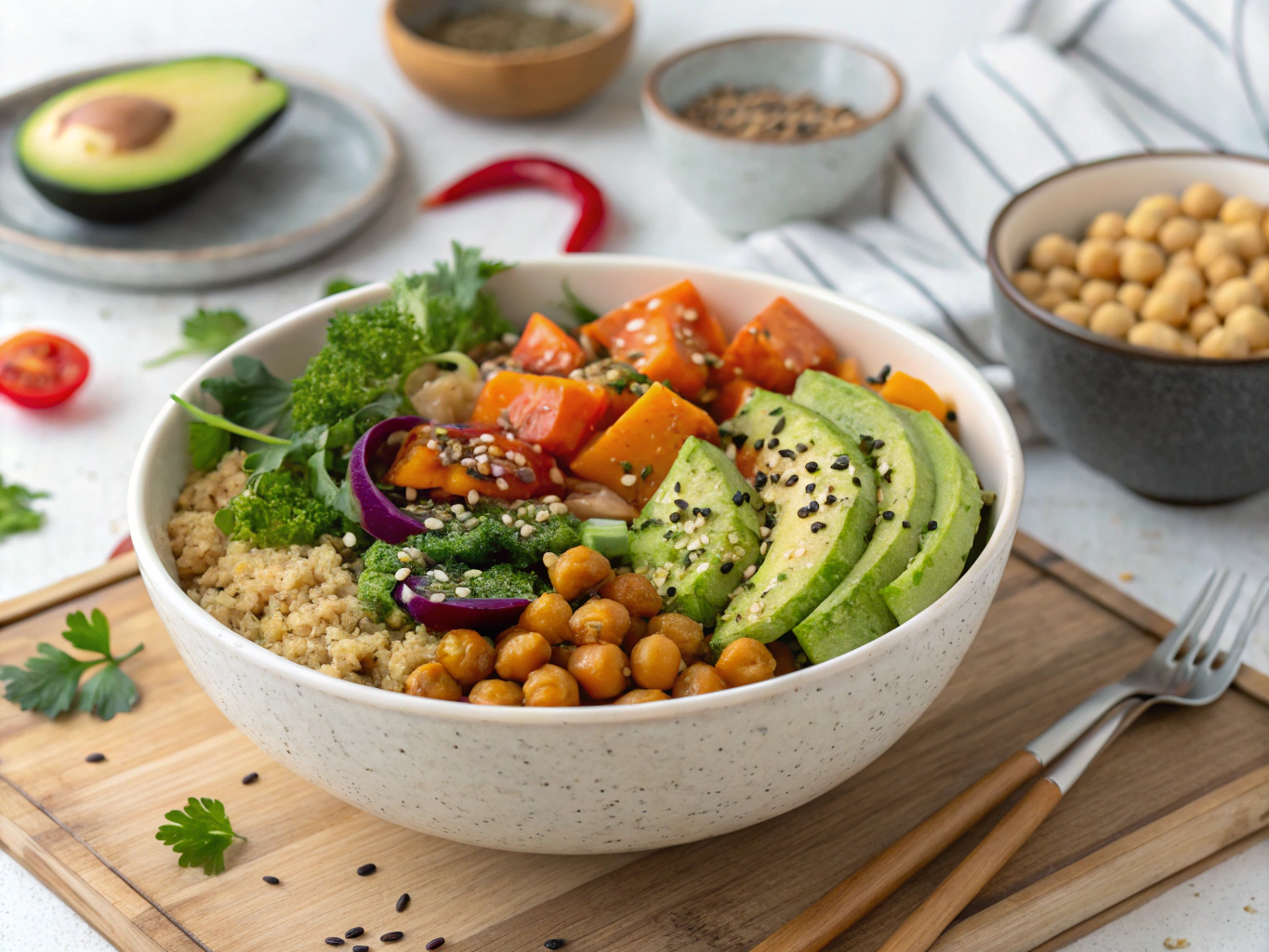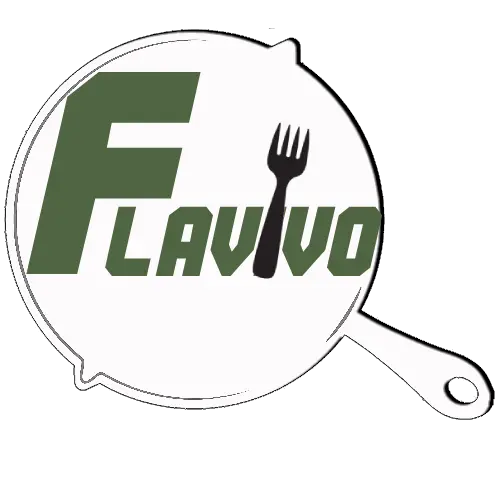
Busy weeknight? Looking to clean out your fridge? Planning a wholesome meal with a rainbow of veggies? Buddha bowls have you covered. In today’s article, I’m diving deep into why buddha bowls have become a beloved meal choice in kitchens across America. I’ll show you how this versatile dish can feel energizing, nourishing, and easy to customize based on your tastes. We’ll also explore its components, why it stands out as a nutritious powerhouse, creative topping ideas, and FAQs to help you build your bowl with confidence from scratch—all through the lens of my Charleston-based kitchen where comfort meets creativity.
From My Grandma’s Pantry to Bold Buddha Bowls
Cooking by Smell, Memory, and Curiosity
As a kid growing up in Charleston, weekend mornings were filled with the scent of simmering grits, pickled okra, and my grandmother’s intuition guiding every dash and stir. She never glanced at a measuring cup. “You cook with your heart, baby,” she’d say. That’s how I fell in love with the unknown—experimenting in the kitchen by taste and memory. Fast forward a few decades, and I’m still that curious kid—only now I share my creations with the world through FlavivoRecipes.com.
One of the most comforting dishes I’ve adapted over the years is the Buddha bowl. What started as a “leftover remix” meal turned into a creative ritual packed with flavor, color, and texture. Some days it’s a Southern-inspired black-eyed pea bowl with smoky collards, the next it’s a plant-powered lunch featuring roasted chickpeas and turmeric quinoa. Buddha bowls not only celebrate variety and balance—they invite you to listen to what your body craves.
Why Buddha Bowls Belong in Every Kitchen
More than just trendy Instagram fuel, buddha bowls represent simple, beautiful meals bursting with nutrition. They’re often made with 100% whole foods and allow for endless flavor harmony between grains, proteins, veggies, and toppings. Whether you’re customizing your own or following one of my roasted veggie bowl recipes or building a themed version of classic bowls like the mediterranean lentil pita bowl, you’ll discover a canvas for your favorite ingredients.
As an approachable and sustainable style of eating, buddha bowls meet you where you are: tired, hungry, fueled by creativity, or just craving something wholesome. They’re fuss-free yet flavorful—just like my favorite meals from the food truck days when all I needed was a burner, a rice cooker, and my imagination.
The Perfect Bowl: Ingredients & How-to
Ingredients List: Build Your Own Balanced Bowl
Creating buddha bowls should feel joyful, not stressful. Mix and match what’s in your pantry or fridge. Below is a foolproof guide based on five foundational components:
- Whole grain base: brown rice, quinoa, bulgur, farro, or cauliflower rice (low-carb)
- Protein: chickpeas, black beans, tempeh, tofu, grilled chicken, or hard-boiled eggs
- Vegetables (roasted or raw): carrots, sweet potatoes, broccoli, beets, kale, bell peppers
- Sauce or dressing: tahini, peanut sauce, lemon vinaigrette, avocado crema
- Toppings (crunch + flavor): pumpkin seeds, sesame seeds, pickled onions, sprouts, hummus, fermented veggies
Want a regional flair? Try miso-sesame tofu on jasmine rice with pickled daikon and edamame for an Asian-inspired twist. Or take cues from our smoky black bean southwest bowl for zesty heat and crunch.
Timing: Quick Prep for Busy Days
Most buddha bowls take around 35–45 minutes from start to finish, with multitasking making it even faster. Here’s a typical breakdown:
| Step | Time |
|---|---|
| Roasting Veggies | 20–25 minutes |
| Cooking Grains | 20 minutes (simultaneous) |
| Protein Prep | 10–15 minutes |
| Dressing + Assembly | 10 minutes |
Batch roast your favorite veggies on Sunday. Then you’re just assembling fresh bowls all week with variety and ease.
Step-by-Step Instructions:
- Cook your selected grain. Use vegetable broth instead of water for extra flavor.
- Preheat your oven to 425°F and roast chopped veggies with olive oil, salt, and spices.
- Cook or prep your protein. For tofu, press for 15 minutes, then air-fry or pan-sear until golden.
- Whisk or blend your dressing. Start with tahini, lemon juice, garlic, and water, then adjust for taste.
- Layer: grain → veg → protein → dressing → topping. Add crunch last so it stays crisp.
- Customize as you go. Need extra protein? Add a hard-boiled egg or more legumes.
Designing Your Bowl: Nutrition & Variety
The 5 Key Components of a Buddha Bowl
According to the Harvard School of Public Health, balanced meals include whole grains, protein, vegetables, healthy fats, and minimal added sugar. Sounds just like a Buddha bowl, doesn’t it?
Here’s how to hit each component:
- Base (Complex Carbs): Quinoa, farro, brown rice
- Protein: Legumes, tofu, seitan, meat, or fish
- Fiber & Color: A rainbow of veggies, both cooked and raw
- Healthy Fats: Olive oil, avocado, tahini, seeds
- Extra Flavor: Herbs, spices, sauce, texture enhancers
All my recipes—especially options like the maple tahini roasted buddha bowl—honor this frame. Eat mindfully, and every forkful becomes fuel.
Are Buddha Bowls Actually Healthy?
Absolutely. Not only do they offer plant-based variety and antioxidant-rich veggies, but their flexible format encourages wholesome choices. They’re naturally high in fiber, protein, and heart-healthy fats—and often free of processed ingredients. When made at home, buddha bowls align with anti-inflammatory diets and support active lifestyles.
To reduce sodium, opt for no-salt beans and DIY dressings. Diabetic? Choose low-glycemic grains like barley or cauliflower rice. Vegan? Lean on lentils, tofu, or edamame. Even keto eaters can swap grains for more greens and hemp seeds.
Flavor, Toppings & Creative Flexibility
What Toppings Go on a Buddha Bowl?
The short answer? Anything with flavor, crunch, or contrast. The fun part is layering ingredients so that every bite gives you something new. Here’s a chart of topping ideas:
| Crunchy | Tangy | Creamy | Spicy |
|---|---|---|---|
| Toasted seeds | Pickled onions | Hummus | Chili oil |
| Roasted chickpeas | Lemon zest | Avocado | Sriracha |
Want inspiration? Check out my BBQ jackfruit bowl with white rice base which layers heat, tang, and silky tahini for the ultimate crowd-pleaser.
The Meaning of the Buddha Bowl Explained
Despite the name, buddha bowls aren’t religious. The term likely derives from the visual full-bowl shape resembling tea offerings to monks, or simply Buddha’s round belly. It symbolizes abundance, nourishment, and gratitude. In essence, it’s about mindful eating: pausing to build a meal that energizes, not depletes.
Unlike fast meals reliant on processed foods, a buddha bowl celebrates whole foods. Whether inspired by global cuisine like our spanish rice cauliflower bowl or home-grown comfort flavors, each bowl invites calm and creativity with every layer.
FAQs
What are the 5 components of a Buddha bowl?
The five components are: grain base (like quinoa or rice), protein (like tofu or chicken), fresh or roasted vegetables, flavorful dressing or sauce, and textural toppings like seeds or pickles.
Are Buddha bowls actually healthy?
Yes, they’re nutrient-dense and include protein, fiber, vitamins, and minerals with minimal processing. Just be mindful of sugar or sodium in store-bought dressings.
What is the meaning of the Buddha bowl?
It symbolizes balance, gratitude, and the idea of eating mindfully and wholly—often inspired by the rounded fullness that reflects abundance.
What toppings go on a Buddha bowl?
Great topping ideas include avocado, tahini drizzle, pickled onions, seeds, nuts, sprouts, and chili crisp—anything that boosts texture and flavor.
Conclusion: Your Creative, Nourishing Go-To Meal
Buddha bowls are more than just a trend—they’re a timeless formula for delicious, nutrient-packed meals. Whether you’re piecing together leftovers or building a culinary masterpiece, each bowl tells your story through flavor, color, and balance. I’ve found that no two bowls—from food truck nights to crafting dinner party showstoppers—are ever the same. That’s the real joy.
So get creative. Try one of my bold flavor-packed bowls over at FlavivoRecipes. And when in doubt? Let your nose and heart lead the way—just like Grandma taught me.
